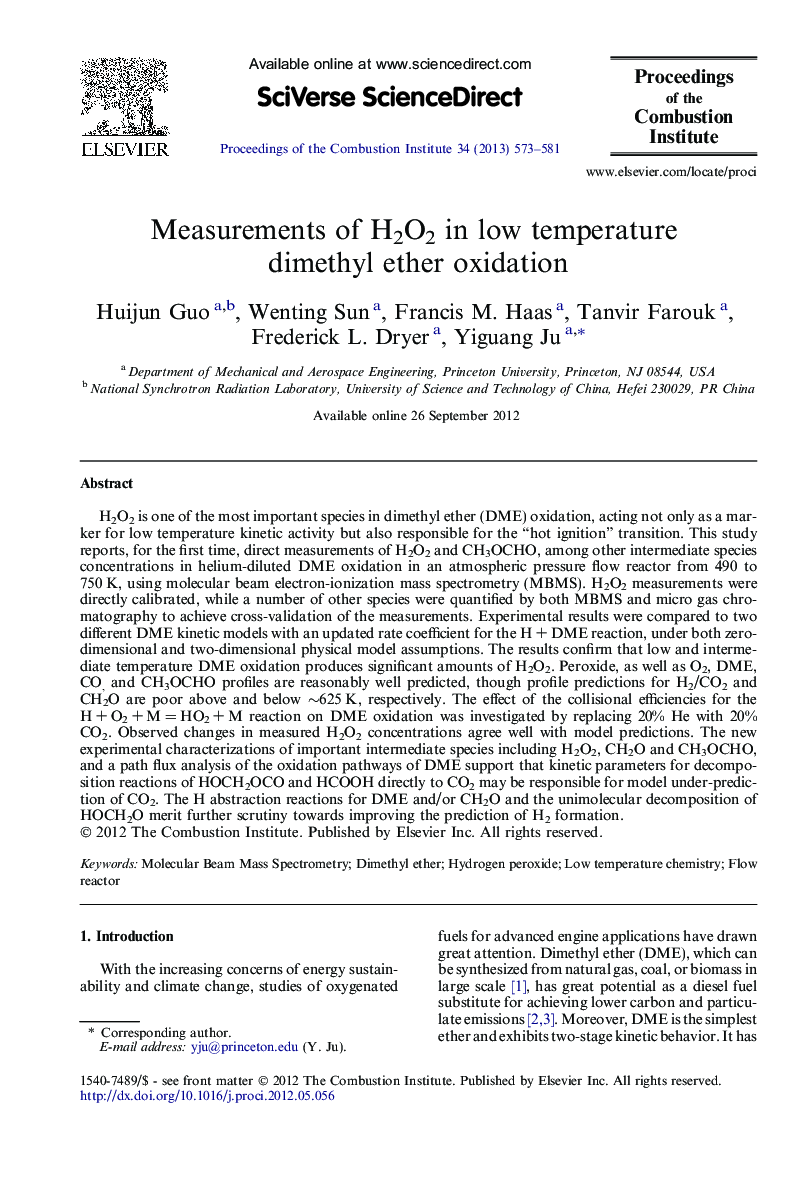| کد مقاله | کد نشریه | سال انتشار | مقاله انگلیسی | نسخه تمام متن |
|---|---|---|---|---|
| 241159 | 1427923 | 2013 | 9 صفحه PDF | دانلود رایگان |

H2O2 is one of the most important species in dimethyl ether (DME) oxidation, acting not only as a marker for low temperature kinetic activity but also responsible for the “hot ignition” transition. This study reports, for the first time, direct measurements of H2O2 and CH3OCHO, among other intermediate species concentrations in helium-diluted DME oxidation in an atmospheric pressure flow reactor from 490 to 750 K, using molecular beam electron-ionization mass spectrometry (MBMS). H2O2 measurements were directly calibrated, while a number of other species were quantified by both MBMS and micro gas chromatography to achieve cross-validation of the measurements. Experimental results were compared to two different DME kinetic models with an updated rate coefficient for the H + DME reaction, under both zero-dimensional and two-dimensional physical model assumptions. The results confirm that low and intermediate temperature DME oxidation produces significant amounts of H2O2. Peroxide, as well as O2, DME, CO, and CH3OCHO profiles are reasonably well predicted, though profile predictions for H2/CO2 and CH2O are poor above and below ∼625 K, respectively. The effect of the collisional efficiencies for the H + O2 + M = HO2 + M reaction on DME oxidation was investigated by replacing 20% He with 20% CO2. Observed changes in measured H2O2 concentrations agree well with model predictions. The new experimental characterizations of important intermediate species including H2O2, CH2O and CH3OCHO, and a path flux analysis of the oxidation pathways of DME support that kinetic parameters for decomposition reactions of HOCH2OCO and HCOOH directly to CO2 may be responsible for model under-prediction of CO2. The H abstraction reactions for DME and/or CH2O and the unimolecular decomposition of HOCH2O merit further scrutiny towards improving the prediction of H2 formation.
Journal: Proceedings of the Combustion Institute - Volume 34, Issue 1, 2013, Pages 573–581